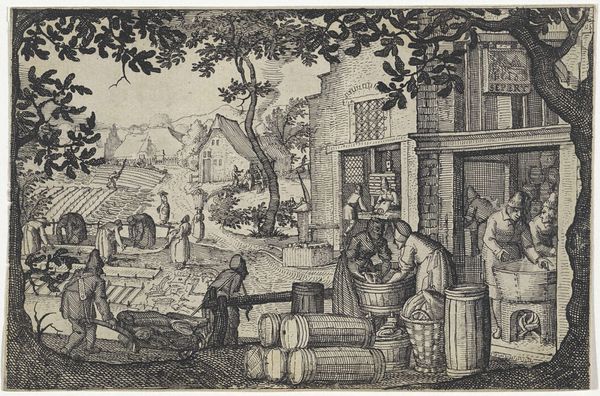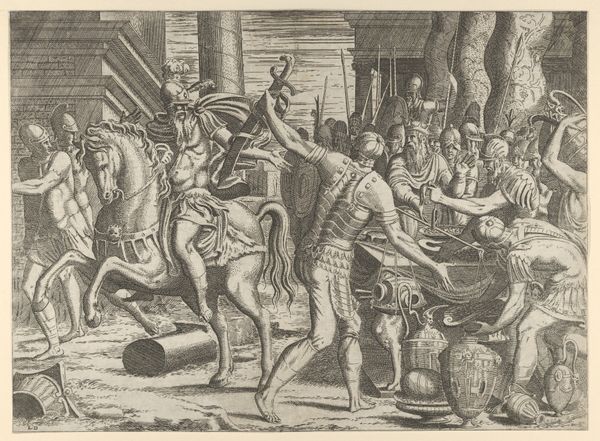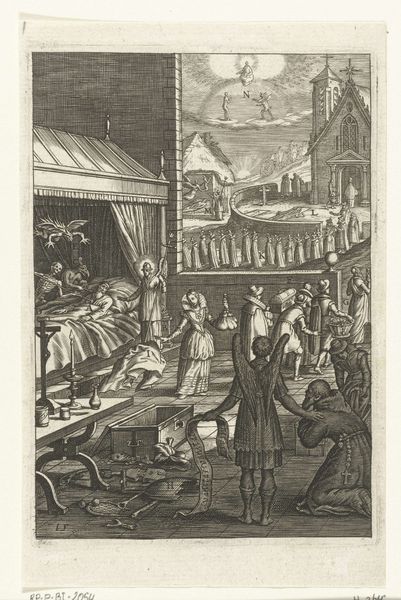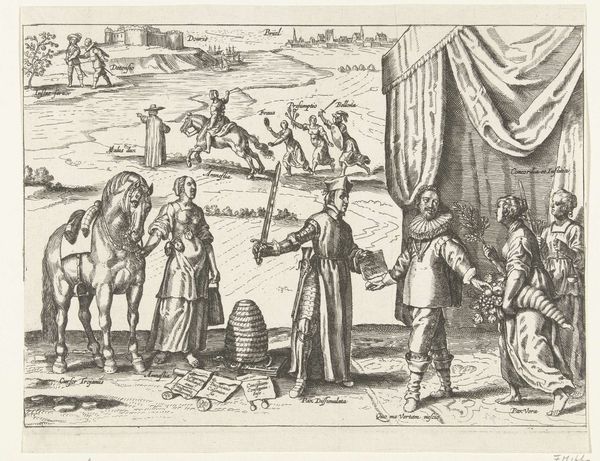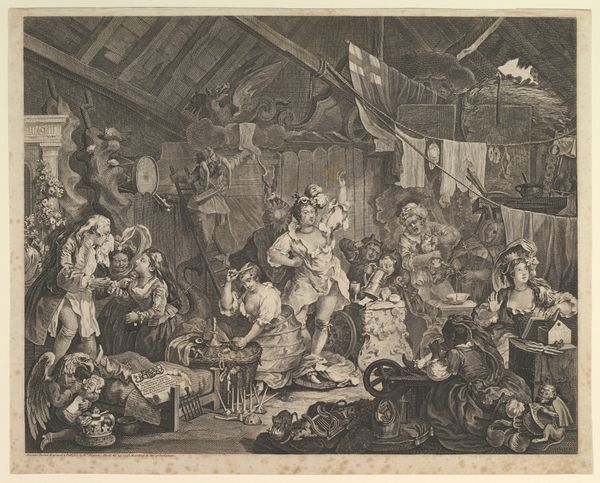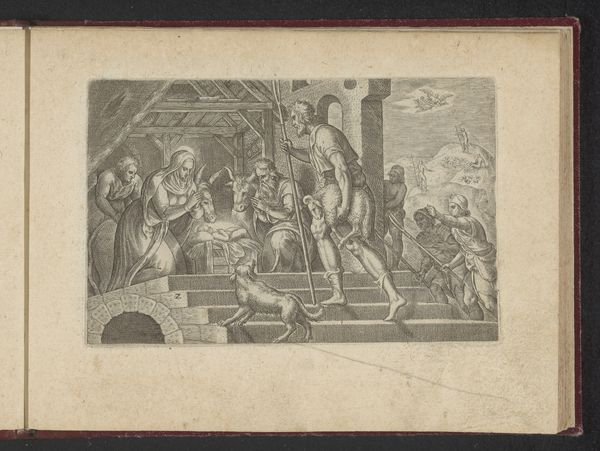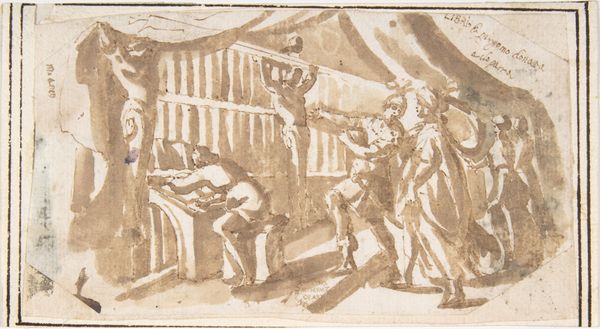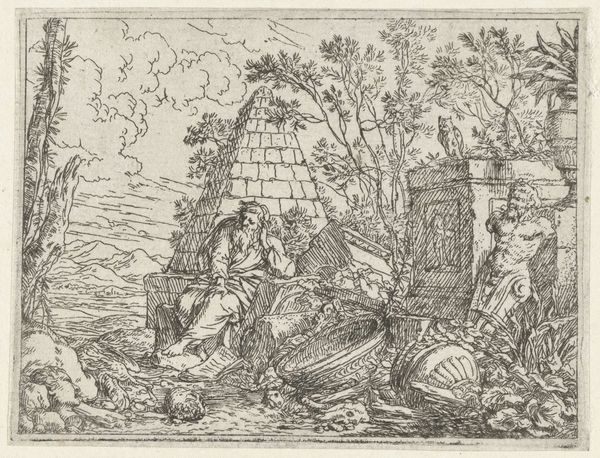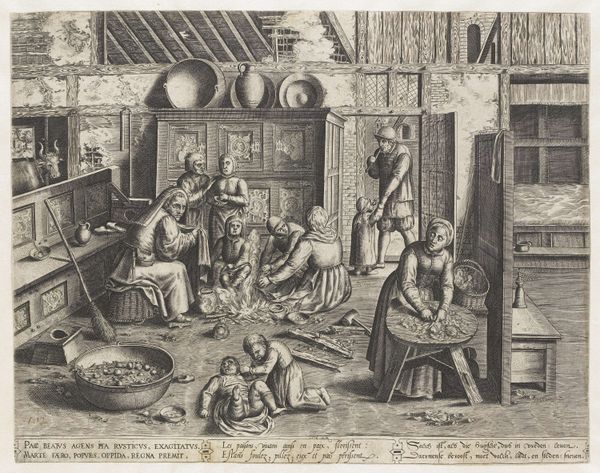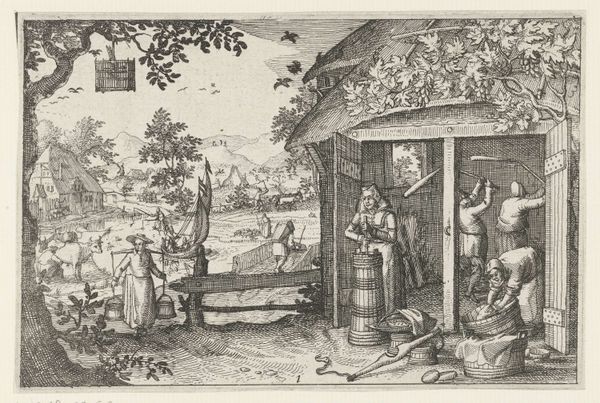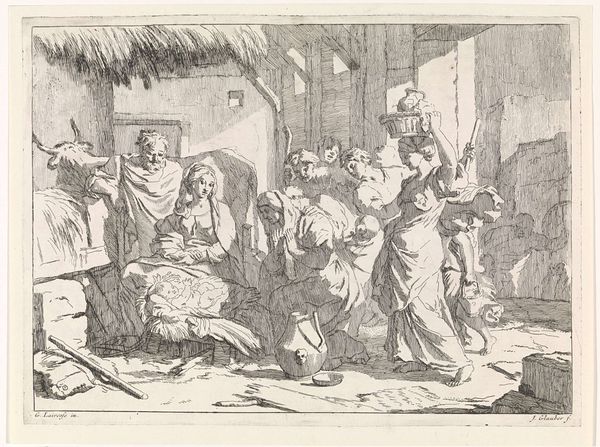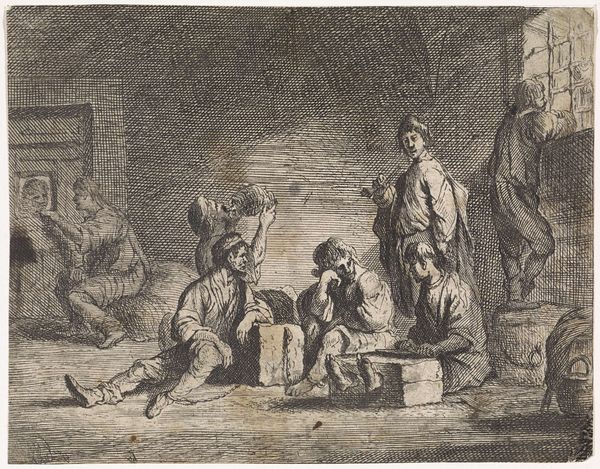
#
quirky sketch
#
pen sketch
#
pencil sketch
#
sketch book
#
personal sketchbook
#
sketchwork
#
pen-ink sketch
#
pen work
#
sketchbook drawing
#
sketchbook art
Dimensions: length 19.7 cm, width 15.7 cm
Copyright: Rijks Museum: Open Domain
Curator: This detailed etching, titled "Tre Navigationi fatte dagli Olandesi, e Zelandesi," which translates to "Three Voyages Made by the Dutch and Zeelanders," was created by Gerrit de Veer in 1599 and resides here at the Rijksmuseum. Editor: Wow, what a scene! It feels like peeking into a dollhouse of historical shenanigans. There's something delightfully chaotic and utterly compelling about it. The overall composition makes it feel kind of frenetic and a bit unnerving. Curator: The composition indeed presents a captivatingly unusual perspective. The structure within the print establishes a sense of space within the picture. Observe the geometric rendering that delineates interiority, almost theatrical in its presentation of the characters as on a stage. Editor: The artist had a vision here—a way to let viewers examine a sort of tableau. Is this perhaps a specific incident being depicted or is it more allegorical in nature? Is it meant to showcase domestic life perhaps or maybe make some comment about trade? Curator: This rendering actually portrays an episode from Willem Barentsz's ill-fated third voyage, a detailed illustration of the Dutch explorers' encampment during their harrowing winter stay on Nova Zembla. Note the placement of each figure: Observe the placement and gesture of each of the characters and consider how De Veer guides our eyes. Editor: Oh, that adds a layer of historical weight to the seemingly casual sketches. Look at the details: men firing guns seemingly in a confined space, others tending to a massive cauldron under what appears to be a celestial object above. So, beyond documenting this moment, did De Veer also add an element of drama? It feels kind of claustrophobic, no? Curator: Undoubtedly, the compact, enclosed scene evokes the tensions and confines endured by the explorers and the texture rendered using engraving adds a tactile, documentary feel, does it not? And consider, as well, the thematic contrast between the warmth and relative safety of the interior, against the implicit danger and cold lurking outside. The rendering captures something intrinsic in this moment for these people: resilience! Editor: It really does, especially with all that activity rendered inside such a relatively tiny cabin, a microcosm of humanity in a brutal landscape, struggling not just to survive but to maintain some semblance of community. I’m taken by its crude vitality—a beautiful and fascinating collision of art and history. Curator: I agree. Viewing this image through a contemporary lens allows us to really reflect on both artistic form and the circumstances that enabled its production, and for this reason, its historic and aesthetic dimensions offer so much meaning to us.
Comments
No comments
Be the first to comment and join the conversation on the ultimate creative platform.
